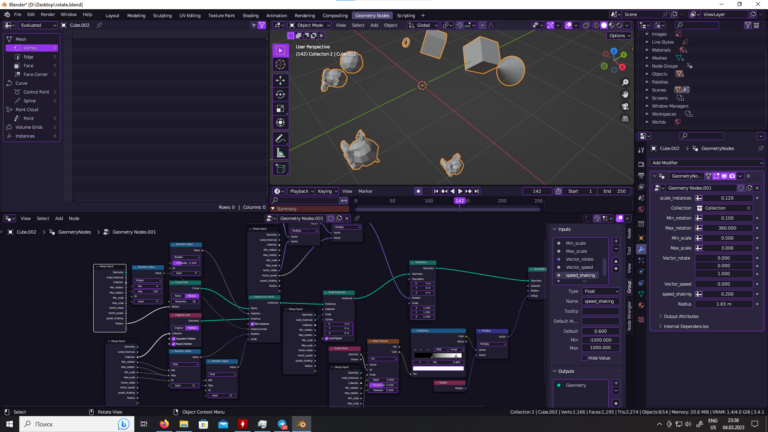who invented the USB flash drive?
In 1970, Dov Froman invented EPROM (Erasable Programmable ROM), the first successful floating gate device.

The next stage of development is associated with the name of Eliyahu Harari from Hughes Microelectronics. In 1976, he applied for a patent for the world’s first EEPROM (Electrically Erasable Programmable Read-Only Memory) – electrically erasable reprogrammable ROM.
In 1984, Toshiba engineer Fuji Masuoka presented an industry paper on new uses for the floating shutter. It was inspired by the observation that the process of erasing data in EEPROM is slower than reading and writing data. To solve this problem, Masuoka came up with a way to bypass the slow erase process by connecting memory cells into a NAND gate structure. It is this type of EEPROM that is called flash for the exponentially increased speed of recording information, which has become comparable to the speed of reading.

According to legend, the name Flash was suggested by Masuoka’s colleague, Shoji Arizumi, because the process of erasing the contents of memory reminded him of a camera flash.
In the same year, Masuoka presented a prototype of non-volatile flash memory at the International Electron Devices Meeting. And in 1986, Intel introduced the concept of a flash card and created a department specializing in solid-state drives. In the future, Toshiba will focus on working with DRAM, which will lead to disagreements with Masuoka. And Intel will take a leading position in the field of flash memory.
In 1988, Intel released the first commercial flash memory chip, which was intended for storing data in computers. It has successfully replaced EPROM based products.
Universal Serial Bus
The second important aspect of a flash drive is the USB interface.
A group of seven companies began developing USB in 1994: Compaq, DEC, IBM, Intel, Microsoft, NEC and Nortel. But the development of technology is mainly associated with Ajay Bhatt, head of the research group at Intel.
Back then, users had to deal with a variety of ports and connectors to connect devices: serial and parallel ports, expansion cards, etc.
Bhatt and his team believed there was an easier way to use computer peripherals, and this led them to the idea of creating a unified interface.

The main challenge was to replace the cumbersome system of serial and parallel ports that was used to connect external components to the computer interface. Since the different ports were generally incompatible with each other, the main problem was that you often had to purchase expansion cards and your own drivers to connect devices.
Another significant inconvenience was that connecting these ports often required rebooting the entire system, which was a big waste of time and an inconvenience for which the developers were eager to find a solution. So, at the end of 1995, the first USB appeared on the market.
USB 1.0 and the improved version 1.1 not only provided significantly faster data transfer, but also allowed dozens of port options to be combined into one simple design, eliminating the need to manually restart the computer or operating system to connect a new device.
Flash+USB
Meanwhile, the flash memory industry was growing at a rapid pace. In 1991, SunDisk released the first solid-state drive based on ATA flash memory with a capacity of 20 MB.
Toshiba has released the world’s first 4MB NAND flash memory. Zenith Poqet and Hewlett-Packard showed portable laptops using flash cards at computer exhibitions.
In 1992, AMD and Fujitsu released the first NOR product. Intel introduced the second generation of 2.8 MB FFS flash memory chips, a 4-20 MB linear flash card, and a 1 MB Boot Block NOR flash for BIOS applications.
Flash memory became cheaper and became ubiquitous.
In 1991 and 1992, Apple and IBM released their flagship laptops. Along with the popularity of laptops, the demand for peripheral devices has also grown.
And at the end of 1995, the first USB standard was released. It provided a huge data transfer speed at that time – 1.5 megabits per second. It was soon replaced by USB 1.1, which could operate at speeds of up to 12 megabits.
So, by the mid-90s, devices appeared that made it possible to record many times more information than before, and an interface with which it was possible to transfer this information much faster. The time has come for USB flash drives.
Dov Moran, president of M-Systems, founded in 1989, is mentioned as the creator and patent holder of the first USB flash drive. In 1989, Moran presented his invention – DiskOnKey, an 8 megabyte drive.
On April 5, 1999, Amir Ban, Dov Moran and Oron Ogdan of M-Systems applied for patent entitled Architecture for a Universal Serial Bus-Based PC Flash Disk. However, the patent describes a product in which there is a cable between the memory unit and the USB connector.

A patent application dated September 13, 1999, written by IBM employee Shimon Shmueli, more accurately describes a USB flash drive – there is no cable. IBM partnered with M-Systems to bring the product to market.
In 2000, IBM was the first to sell flash drives with USB version 1.0 in the United States, and then with version 1.1.
It’s also important to note that block drivers for USB storage were introduced in 1999 on Apple computers and in 2000 on Microsoft computers. Otherwise, flash drives would be much less useful if each computer had to install a driver for them separately.
In 1999 Pua Khein-Seng – The CEO of Phison Electronics Corporation, based in Taiwan, stated that he was the author of the invention. The difference between his flash drive was that it only used one chip. The device was called Pen Drive.
That same year, Netac of China also claimed to have invented the USB flash drive. Whether this is true or not is difficult to prove, since their U Disk flash drive appeared on the market only in 2002. In comparison, IBM released its version in 2000 and Phison in 2001.
Another person claiming to be the author of the flash drive is Henn Tan from the Singapore technology company Trek 2000 International. The company was the first to actually release a USB flash drive to the mass market. The drive was called ThumbDrive, which reflected the compactness of the device – just the size of a thumb.

Trek 2000 introduced their product in 2000. The gadget had 8 megabytes of data and did not require an external power source, receiving power directly from the computer when connected.
As we can see, almost all companies involved in memory development in one way or another have filed patents for the invention of a USB flash drive and declared their authorship.
ThumbDrive by Trek 2000 International
The invention of the flash drive was inevitable. Among all the names involved in its creation, the name of Henn Tan is usually forgotten or not known at all. And in vain. After all, in many ways he and his company Trek 2000 International contributed to the fact that the device became commercially successful and the demand for it increased significantly.
Trek presented its ThumbDrive flash drive in 2000 at the CeBIT international exhibition dedicated to information technology and telecommunications solutions, held in Germany. The response to the product was overwhelming, although the Trek booth itself was modestly decorated.

The success of ThumbDrive catapulted the Trek 2000 onto the world stage. From a small company of five people, Trek 2000 has grown into a global company with offices in many countries, including the United States, Japan, India and China.
The career of Henn Ten, the future founder of Trek 2000, begins in 1977, when NEC’s semiconductor division hired him as a sales manager. In 1980, he moved to Sanyo as a regional sales manager. He worked there for 15 years – gained experience in the electronics industry and acquired many useful connections with suppliers and customers, which in the future will help him in distributing flash drives.
In 1995, Tan left Sanyo and bought Trek, a small family-owned electronics components retailer, for just under S$1 million. He planned to develop products to license or sell to one or more large multinational corporations in Singapore.

Thanks to his connections, Tan managed to ensure that the unknown company Trek became the official design center of the Singapore division of Toshiba Electronics in 1998. Under the agreement, Trek began to develop and manufacture products sold under the Toshiba brand. This allowed Trek to attract talented engineers.
One of Toshiba’s ideas was to create an MP3 player – a compact and portable solid-state device. It was supposed to copy music files from a computer to which it would be connected via a USB connector, and then play them.
As Tan himself told a Singapore newspaper The Straits Times, he thought that “if the company just made the player, it wouldn’t be able to make much money.” If the device becomes more universal, capable of working not only with MP3, but also with text, spreadsheets, images, that is, with any computer files, then it will become more in demand. Many companies already sell music players, but a low-cost, universal USB storage device could open up new markets.
As a result, in 1999 Toshiba released player, and Tan and his team began working on a flash drive.

The work lasted almost a year.
Getting a working product was not so easy – it required not only the appropriate combination of hardware, but also specially developed firmware that allowed the SSD to interact with different operating systems.
Eventually, in 2000, a month before the German technology fair where Trek unveiled the device, Tan filed a patent for the ThumbDrive.

Patent wars
The huge interest and popularity of ThumbDrive led to the proliferation of similar devices in many parts of the world soon after its launch. There were also competing claims to the invention of the device. For example, the Chinese company Netac Technology stated that it was the company that invented the USB flash drive.
With Netac, Tan had the most vicious patent disputes. Former Trek employees Cheng Xiaohua and Deng Guoshun have seen some flash memory-related components and circuit boards. In 1999, Xiaohua and Guoshun returned to China and founded Netac.
The city of Shenzhen, where Netac was based, was at the time a center of imitation: many electronics items – DVD players, mobile phones, MP3 players – were produced to circumvent intellectual property laws.
However, in July 2002, Netac received its first patent for a method and device for external data storage based on electronic flash memory. At the time, at least 14 companies demanded that the patent be invalidated because “the patented device is an apparent combination of USB architecture and flash memory technology published in 1997.” The company’s website still displays the proud inscription “inventor of USB flash drive.”
In 2002 Trek filed in a Singapore court against four relatively small manufacturers of memory devices: M-Systems Flash Disk Pioneers, FE Global Electronics, Electec and Ritronics Components. Companies copied ThumbDrive.
In 2002, the Singapore Intellectual Property Office approved Tan’s patents for Thumbdrive and related USB storage technology.
In 2007, Trek 2000 began a campaign to protect the trademark Thumbdrive and won it three years later, on November 30, 2010, after three appeals. Trek 2000 currently has library of over 600 patents related to USB storage technology.

In the end, Tan’s efforts paid off to some extent. Imation, Verbatim, Lenovo and Toshiba have since paid Trek royalties for the production and sale of ThumbDrives.
But still, Trek’s revenue comes from licensing ThumbDrive and another flagship product Flu Card were insufficient to maintain the company’s profitability. In 2006, Tan and his chief financial officer began falsifying the company’s accounts, deceiving auditors and shareholders, rather than admit that things were going wrong. After Ernst & Young’s financial auditors uncovered the irregularities in 2015, Tan resigned as chairman and CEO and pleaded guilty in August 2022 to falsifying accounts.
Patent wars did not lead Trek to greatness. And remembering the history of the creation of the flash drive, hardly anyone will remember Tan’s name. He single-handedly tried in every way to take moral and financial credit for the creation of the flash drive, Tan went to great lengths, even breaking the law, to achieve the success of his company and himself.
Looking back, Tan says the best decision then would have been to partner with one of the big brands when ThumbDrive was released in March 2000. However, impatience and the desire to become the “standard bearer of Singaporean technology” prevailed. “I was naive and trusting and decided to release this product alone, believing that we would succeed,” Tan said.
As this story clearly shows, the advent of the flash drive is the work of many people.
The UFO flew in and left a promotional code here for our blog readers:
-15% on any VDS order (except for the Warm-up tariff) – HABRFIRSTVDS.




